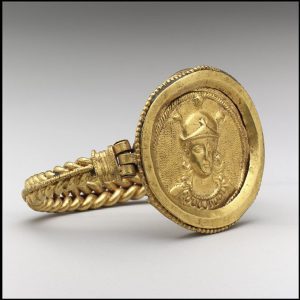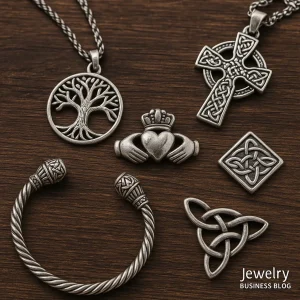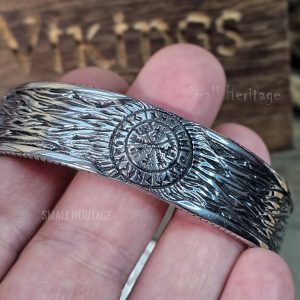Medieval arm rings and bracelets were more than just fashion statements; they were symbols of power, heritage, and social standing across various European cultures. From Viking warriors to European nobility, arm jewelry reflected both personal and cultural identity, often crafted with meticulous detail and infused with symbolic meaning.
Viking Arm Rings

Viking bracelets or arm rings were perhaps the most iconic in medieval history. These pieces, often made of twisted gold, silver, or bronze, were given as gifts to warriors by their leaders to reward loyalty and bravery. Many Viking arm rings featured intricate knotwork, animal motifs, and runic inscriptions that carried spiritual or cultural significance. Arm rings were worn by both men and women, signifying protection, allegiance, or wealth.
Celtic Arm Rings and Torcs
Celtic arm rings, also known as torcs, were prominent in regions such as Ireland, Scotland, and Gaul. These were typically circular pieces worn around the upper arm, made from gold or bronze and often featured spirals, geometric patterns, or zoomorphic designs that were symbolic in Celtic culture. Arm torcs were a sign of nobility and warrior status, and they were often buried with their owners as a symbol of their rank and bravery.
Roman Arm Cuffs

In the Roman Empire, arm rings or cuffs were commonly worn by soldiers and higher-ranking officials. Crafted from gold or silver, Roman arm jewelry was often simpler in design compared to the intricate Viking or Celtic pieces, but they carried immense value. Roman soldiers sometimes wore arm cuffs as symbols of achievement or valor, and many pieces were adorned with gemstones or engraved with Latin inscriptions.
Byzantine Arm Jewelry
The Byzantine Empire also contributed significantly to the tradition of arm jewelry. Byzantine bracelets and arm cuffs were often richly decorated with intricate designs, pearls, and gemstones, reflecting the empire’s luxurious aesthetic. These pieces were favored by the aristocracy and used as symbols of wealth and status in the royal courts of Constantinople.
Anglo-Saxon Arm Rings
Anglo-Saxon arm rings shared similarities with both Celtic and Viking designs, often incorporating runes or symbolic patterns. Anglo-Saxon warriors wore these arm rings as tokens of loyalty, and the exchange of such jewelry often symbolized allegiance to a king or lord. Gold and silver arm rings were particularly valuable, and the wealthier a warrior, the more elaborate his arm ring.
A Lasting Legacy
The tradition of wearing arm rings across medieval Europe reveals a fascinating intersection of culture, art, and power. Whether crafted by Vikings, Celts, Romans, or Byzantines, arm jewelry continues to inspire modern designs, blending ancient symbolism with contemporary aesthetics. Today, you can find many modern interpretations of these historical pieces, keeping the legacy of medieval arm jewelry alive.





